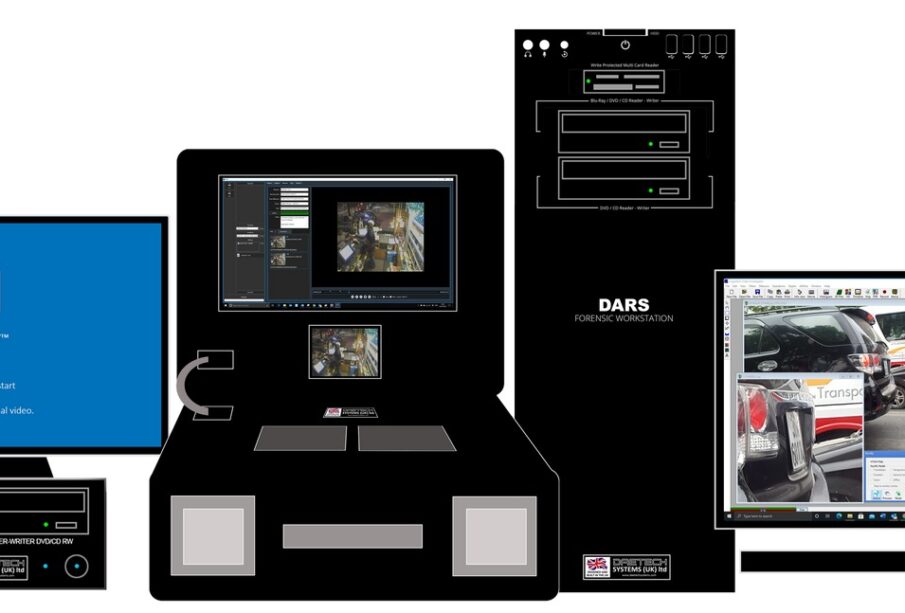Enhancing Forensic Analysis with Digital & Analogue Replay Systems (DARS)

Introduction
In the world of forensics, technology is an essential ally. From crime scene investigation to courtroom evidence, the role of digital and analog systems is pivotal. One such technology making waves in the forensic community is the Digital & Analogue Replay System (DARS). This article delves into how DARS, with its cutting-edge processing engines, is revolutionizing forensic computer analysis and photogrammetry, ensuring forensically sound procedures and practices.
The Importance of Forensically Sound Practices
Forensic investigations rely heavily on the integrity and reliability of evidence. Ensuring that digital multimedia evidence (DME) is handled correctly is crucial for maintaining its admissibility in court. The DARS range of processing engines is specifically designed to address this need, providing a robust solution for capturing, processing, and analyzing vast quantities of CCTV and DME while adhering to stringent forensic standards.
What is DARS?
Digital & Analogue Replay Systems (DARS) encompass a range of sophisticated processing engines that facilitate the playback, processing, capture, and analysis of digital and analogue media. These systems are engineered to support law enforcement agencies and forensic professionals in their quest to uncover the truth from multimedia evidence.
Key Features of DARS
- Versatile Playback and Processing: DARS offers unparalleled capabilities in playing back both digital and analogue footage. This versatility is crucial for forensic analysts who often deal with a wide variety of media formats.
- High-Quality Capture: The ability to capture media in high quality is another significant advantage of DARS. This ensures that every detail is preserved, which can be critical in forensic investigations where even the smallest piece of evidence can make a difference.
- Robust Analysis Tools: DARS is equipped with advanced tools for analyzing multimedia evidence. These tools enable forensic experts to scrutinize footage frame-by-frame, enhancing their ability to detect and interpret subtle details.
- Forensically Sound Procedures: Ensuring that all processes are forensically sound is a cornerstone of DARS. This means that the systems are designed to maintain the integrity of the evidence throughout the entire workflow, from capture to analysis.
DARS in Forensic Computer Analysis
Forensic computer analysis involves the examination of digital devices and data to uncover evidence related to criminal activities. DARS plays a critical role in this domain by providing the tools needed to handle large volumes of digital evidence efficiently.
- Data Integrity: DARS ensures that digital evidence is handled in a manner that preserves its integrity, making it admissible in court. This is vital for maintaining the credibility of the evidence.
- Efficiency: The advanced processing capabilities of DARS allow forensic analysts to work more efficiently, reducing the time required to analyze large datasets.
- Detailed Analysis: With DARS, forensic experts can perform detailed analyses of digital evidence, including recovering deleted files, examining metadata, and identifying digital footprints.
DARS in Photogrammetry
Photogrammetry is the science of making measurements from photographs, particularly for mapping and surveying purposes. In the context of forensics, photogrammetry is used to create accurate 3D models of crime scenes, accident sites, and other relevant locations.
- Precision: DARS enhances the precision of photogrammetric analyses by providing high-quality capture and playback capabilities. This ensures that the measurements derived from the photographs are accurate and reliable.
- 3D Modeling: By integrating with photogrammetry software, DARS enables the creation of detailed 3D models that can be used in investigations and court presentations.
- Comprehensive Analysis: The ability to analyze multimedia evidence in great detail allows forensic experts to gain a comprehensive understanding of the scene, aiding in the reconstruction of events and identification of key evidence.
Conclusion
The Digital & Analogue Replay System (DARS) represents a significant advancement in the field of forensic analysis. Its range of processing engines provides law enforcement agencies and forensic professionals with the tools needed to handle vast quantities of CCTV and digital multimedia evidence while ensuring forensically sound procedures and practices. Whether in forensic computer analysis or photogrammetry, DARS enhances the accuracy, efficiency, and reliability of forensic investigations, ultimately contributing to the pursuit of justice.
















